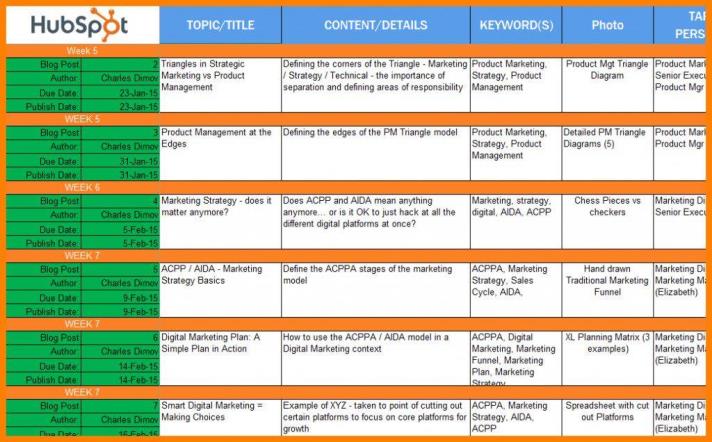Step 3: Leave some blank spaces
A content calendar is by definition a proactive tool. So, don’t forget to leave space for the ad hoc or reactive opportunities that relevant news and emerging trends can create. Perhaps it’s a huge merger between competitors, maybe it’s a consumer trend you want to have a point-of-view on. The weekly news cycle can throw up all sorts of opportunities for content around topics that are trending now.
Step 4: Observe and measure
Keep a close eye on content analytics. The calendar will be a living and breathing document, it’s fine to make course corrections. If something isn’t engaging readers, edit it or pull it. If one topic or asset is generating loads of interest, go back to brainstorming and think of new content executions that can maximise that audience. Keep another close eye on the competition. They might be doing something right and there’s no shame in taking inspiration from elsewhere.
Step 5: Finalising the calendar
Ultimately you want to have a mix of content lengths and formats to accommodate the preferences of different readers. Put the time and effort into at least one well-researched and original long-form blog post. That means one-piece between 1,200 and 2,000 words, alongside 1-2 shorter blog posts as more reactive content. Even though people want shorter pieces they can digest quickly, they’re also willing to stick with a longer article if they find it valuable.
Create monthly visual content too via infographics, statistics or video. Not only is this format highly share-able on social, in terms of volume they receive more downloads, embeds & engagement overall.
Finally, publish a quarterly whitepaper. Whitepapers and eBooks are a great way to delve even deeper into a subject you’ve covered in one of your long-form blog posts. As they are weighty and in-depth, they make great assets for content upgrades and lead generation campaigns. They also provide a brilliant format for content recycling. If you’ve written 5 or 6 long form blog posts on a similar subject, gather them together as chapters of an eBook, then post it to your website.
Step 6: Don’t just publish, distribute
After each piece of new content goes live, promote it on social media, in your email newsletter, in PPC campaigns, or if the asset is rich enough like an eBook – create a dedicated landing page and use it to gather leads. Plug the ‘break’ dates and distribution channels for each piece of content into the calendar as well, to ensure the promotion piece isn’t missed out.
After that it’s a matter of measuring the effectiveness of each asset you’ve created. The KPIs for should be set according to the stage in the sales cycle the content is meant to influence. That can range from unique user sessions for blog posts meant to fill the top of the funnel, to leads generated, and sales converted.
Revisit the calendar regularly to make sure that everything is on track. A content marketing calendar can be an incredibly useful tool – making your job easier and demonstrating the thought process behind your work. Use it to full advantage.
This piece was brought to you by the experts at https://www.datadial.net













